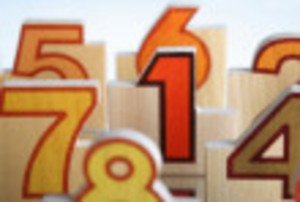Students generally have their first encounters with prime and composite numbers in upper elementary or middle-school math classes. As a middle-school math teacher, I find that asking students to interact in any lesson produces a better learning outcome. This plan for teaching prime and composite numbers always works well with my math students.
For Your Information
A whole prime number has exactly two factors: itself and one.
7 is a prime number. Its only factors are 7 and 1.
7 x 1 = 7. You can’t multiply any other positive numbers to get 7.
9 is not a prime number-it doesn’t simply have itself and one as factors-9 has another factor…3.
Yes, 9 x 1 = 9, but 3 x 3 = 9 also.
When a number such as 9 is not a prime number, it is called a composite number.
It is made up-or “composed of”-more than two factors.
Why Do We Have to Learn This?
They always ask. Understanding prime numbers helps students work with fractions, particularly finding common denominators. It will also aid them in factoring polynomials. The bottom line is that it will save them time in later math lessons.
Helping Students Discover the First 100 Prime Numbers
Give each student a copy of this “Hundreds Chart” and tell them they’re going to find the prime numbers from 1 to 100. Do this prime number activity on an overhead projection, right along with your students.
Cross out #1.
Circle #2. Cross out all multiples of 2-every other number.
Circle #3. Cross out all multiples of 3-every third number. (Emphasize that some numbers will already be crossed out.)
Circle the next open number, #5. Cross out all multiples of 5-every fifth number.
Continue that pattern until every number is either circled or crossed out.
Tell students that the circled numbers are called “prime numbers.”
There are 25 prime numbers between 1 and 100.
Making Sure
Next, I enlist a student to take charge as I display a computerized Eratosthenes’ Sieve. This program instructs the user to click on any number. It ‘whites out’ all multiples of that number. It continues until only the prime numbers remain-and they all appear in red. It shows the primes through 400, and students can look at this display to double-check that they have correctly identified all primes from 1 to 100 on their ‘hundreds charts’.
Definitions
Now they’re ready to take a few notes on what they’ve just discovered. Ask students if they now know what a “prime number” is. Some of them usually have it figured out. Give students time to record notes. (Refer back to “For Your Information”.)
Alerts!
Tell students the #1 is a ‘loner’:
The number 1 is not a prime number: it does not have exactly two factors.
The number 1 is not composite: it does not have more than two factors.
One more math alert…the number 2 is the only even prime number.
Experiment with Smaller Groups or Special Needs’ Classes
I have used this penny experiment in smaller classes and groups. It works well if students need more visual reinforcement. It is a nice addition in a special needs’ class as well. Basically, using masking tape, pennies, and a tub of water…students can see the prime numbers float, and the composite numbers sink.
Games
If you have access to a computer lab, students can practice identifying prime and composite numbers. XP Math’s King Kong’s Prime Numbers asks students to ‘whack’ King Kong if he’s holding a prime number, and to ignore him if the number is composite. AAA Math has a Prime and Composite Number Practice. Students are given numbers and must identify them as prime or composite.
Challenge
Some students are looking for greater challenges. You might ask them to find “the greatest prime number” yet to be discovered. You could also direct them toward the Nova Science video on twin prime conjecture.
Additional Articles on Teaching Math:
Math Problem-Solving: Don’t Protect Students from Frustration
Teaching Math: Identify and Name Angles
“Of” Means “Times” in Math
Krypto Math Game Strenghtens Basic Skills


